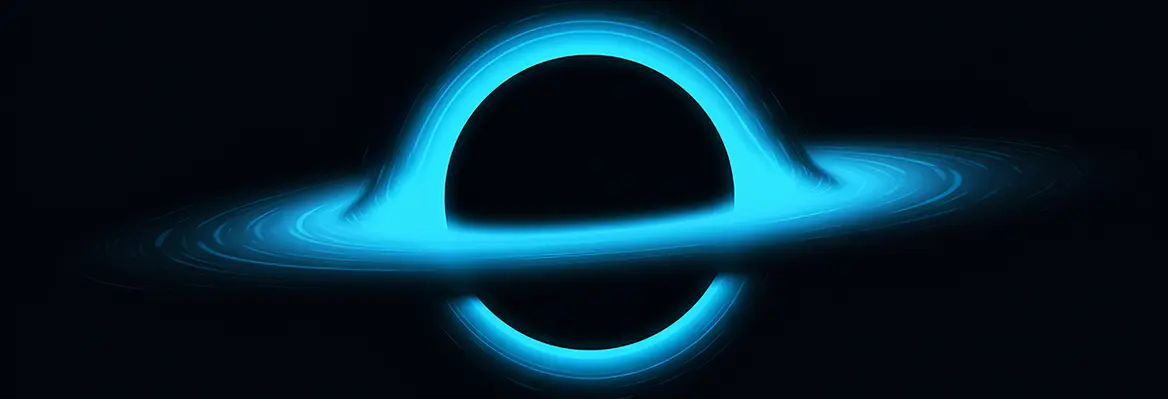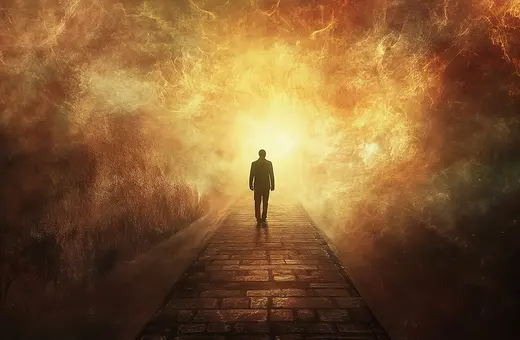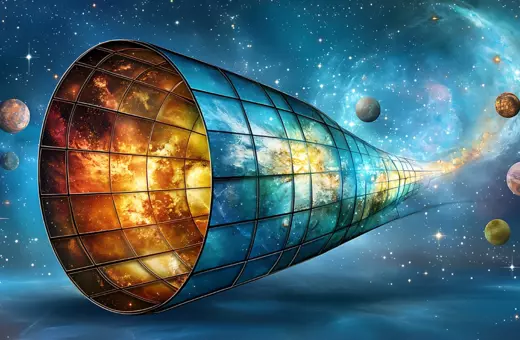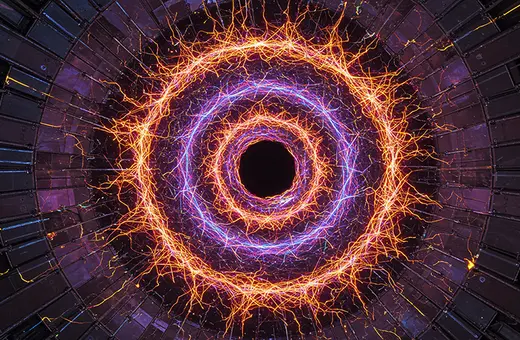Black holes aren’t just cosmic oddities—they’re cracks in our idea of reality. So argues Johns Hopkins University philosopher William Egginton, whose work explores the connections between Kant, Heisenberg and Borges. He proposes that singularities lurking in Einstein’s equations—the mysterious centers of black holes—are echoes of the notorious paradoxes of the ancient philosopher Zeno. Both the singularities and the paradoxes are what the Argentine poet Borges called “crevices of unreason” in the realities we’ve built, revealing to us, like glitches in the matrix, that our world of space and time is not real. Rather, we have “dreamt the world.”
Languishing on the killing fields of the First World War, Karl Schwarzschild obsessively worked out the ramifications of his friend Albert Einstein’s recently published equations of general relativity. Einstein had redefined gravity so that it was no longer a force acting between distant objects, but a description of the ways massive objects like planets and stars curve the space and time around them. It was Schwarzschild who drew the inescapable conclusion that if enough matter was packed into a small enough portion of space, it would curve spacetime around it to such a degree that the curvature would become infinite, creating what would come to be known years later as a singularity. The novelist Benjamin Labatut memorably depicts this realization, along with the wanton bloodshed of the war, impinging on Schwarzschild’s sanity.
Schwarzschild’s solution to Einstein’s equations led to the idea of a singularity as a “place” (we need scare quotes because place implies space, and space and time become meaningless concepts where singularities are concerned) where the laws of physics no longer apply. It is not merely a 0, an absence, but rather the appearance of a null or infinite value in such a way that it renders the equations unsolvable. The curvature of spacetime that should, as applied to the real world, measure a perceivable force—gravity—swallows everything that crosses its border and tears open the very fabric of spacetime itself.
___
What Schwarzschild had discovered was something like a real-world expression of one of the paradoxes attributed to the philosopher Zeno of Elea, which were supposed to prove that motion—indeed any change—is impossible.
___
Black holes are now known to be ubiquitous in the universe, and likely the gravitational centers of most if not all galaxies. While we cannot, by definition, know what it is like to pass the border of no return—the event horizon, at which the curvature of spacetime causes light beams to turn back on themselves—Einstein’s equations imply a very curious outcome. To begin with, the timeframes for someone entering a black hole and for someone watching this happen from the outside become completely disengaged from one another. Both would experience time as flowing normally from their own perspectives. But from the vantage point of the external observer’s timeframe, the time that it takes for the person who has entered the black hole to approach the singularity at its center will stretch to eternity. This is because from the perspective of those of us on the outside, the nearer something gets to a singularity, the longer it takes to get there: time slows the nearer it gets. Therefore, something can only get closer to a singularity—it can never arrive.
SUGGESTED VIEWING Uncovering black holes With Amélie Saintonge






















Join the conversation